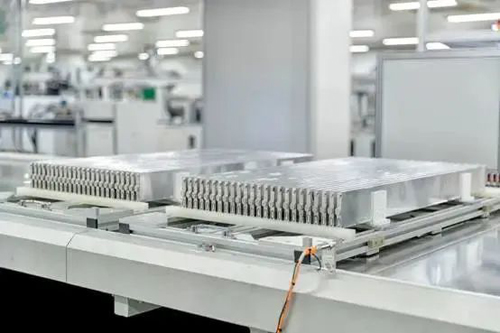The BYD Blade Battery has generated countless attention since its release. Marveling at its performance, many people will wonder if the cell, which is nearly 1 meter long, can be mass produced.
As a professional manufacturer of battery pack assembly machine and battery test equipment, Xiamen WinAck was invited to visit BYD's FODI Battery factory inChongqing, and communicated with Sun Huajun, deputy general manager of FODI Battery, to learn about the production process of blade batteries and its future technical direction.

The blade battery is still a LFP battery, but its structure and specifications are very different from the past. As a result, BYD has also adopted a new production line.
The tour follows the battery production process, and the basic process does not change. However, the quality control capability, production efficiency, high degree of automation and digitalization of each process reflect the pursuit of the world's most advanced power battery factory.
There are several features and processes that stand out.
1. Environmental control
In battery production, air cleanliness is highly correlated to battery quality. The air includes dust, metal particles and moisture, all of which can be considered enemies of battery safety. The first and foremost is dust control, which, if introduced into the battery, can lead to internal short circuits, or even punctures in the separator, as well as self-discharge and other issues.
BYD has made a dust-free design for the workshop as a whole, and the whole is a 10,000-grade standard, with key processes reaching a 100-grade standard. The so-called class 100 standard, Sun Huajun said, a cubic meter of space, 5 microns (hair 1/20 thickness) of particles no more than 29, which reached the same standard with the LCD production plant.
2. Wide-Format Coating and Rolling
The blade cell is 96 cm long, which means it needs to be about that long, and the coating and roll process must support that width. The coating process at the Freddy factory supports widths of up to 130 cm and simultaneous coating on both sides with less than 1% weight deviation per unit area.
In the roller pressing process, it can support 120 cm wide width, and the speed of roller pressing can reach 120m/min, and the thickness control is within 2μm, which ensures the consistency of the thickness of wide size pole piece.
At a width of 120 cm, the middle part of the pole sheet is not as stressed as the sides and may be thicker than the sides. For this reason, the roller presses at the Verdi plant also use the bending cylinder process, which corrects the parallelism of the rolls to ensure that the thickness of the pole piece after rolling is maintained consistency.
3. High-speed laminations
Compared to wound core, stacked core has many advantages, but just one, the process is difficult. Firstly, the precision and consistency of pole slitting should be high; secondly, the alignment precision should be high when stacking; thirdly, based on the first two. Stacking is generally less efficient than winding.
BYD's previous batteries were mostly coiled. But Fudi factory blade battery, the use of laminated process, and is BYD completely independent independent independent development of equipment and cutting program. The designed lamination speed is 0.3s/pcs, which is the highest level in the industry, according to the factory's introduction. Unfortunately, the lamination process is not included in the tour.
4. Pressurized liquid injection
With such a large, narrow cell as the blade battery, it is also a challenge to get the electrolyte fully injected and absorbed. BYD independently developed the space capsule pressurized liquid injection technology, which firstly adopts the vacuum negative pressure to evacuate the air inside the battery shell, and then uses the pressurized method to inject the electrolyte. Fill the electrolyte thoroughly.
How Blade Batteries came to be
Making the cells bigger and longer, reducing the number of cells and making the most of the space is an improvement that many battery manufacturers can think of. However, to achieve a length of nearly 1 meter, many battery cell factories dare not think.
BYD made 18 years of lithium iron phosphate batteries, the last 12 years, and continue to develop to a long bar structure, aspect ratio from 3.5 to 3.5 to 3.5. .8, eventually reaching 10.6, narrow as a blade battery design. Blades that don't get longer in a day.
Since the design to the birth, BYD also spent a year and a half, including the first to do the calculation and simulation, through the expert technical review, after four rounds of verification and testing of hand samples, mold samples, OTS samples, small batch prototype samples, before the final mass production.
Contact: WinAck
Phone: 0086- 188 0506 7911
Tel: 0086- 592 - 7297239
Email: timi@winack.com
Add: WinAck Group, Xiangbei Industrial Zone, Xiamen City, China